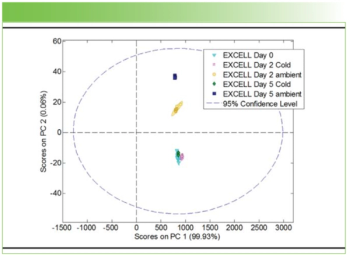Key Points
- SERS enables ultra-sensitive molecular detection using nanostructures that amplify Raman signals by up to 10¹⁴-fold.
- AI tools are now used to analyze complex spectral data, improving accuracy in diagnosis and biomarker detection.
- Machine learning and deep learning models help decode overlapping signals in both labeled and label-free SERS.
- Applications include disease phenotyping, personalized therapy, and in vivo imaging with high multiplexity.
AI and Light: A Powerful New Duo in Biomedical Science
In a groundbreaking synthesis of photonic precision and artificial intelligence (AI), researchers at Shanghai Jiao Tong University have developed a powerful framework that combines surface-enhanced Raman spectroscopy (SERS) with machine learning (ML) to tackle longstanding challenges in biomedical detection and diagnosis. Their review, published in Analytical Chemistry, offers a comprehensive roadmap for how AI can accelerate SERS-based applications from basic research to clinical implementation (1).
The study, led by Xinyuan Bi, Xiyue Ai, Zongyu Wu, Linley Li Lin, Zhou Chen, and Jian Ye, spans contributions from the School of Biomedical Engineering and the Institute of Medical Robotics at Shanghai Jiao Tong University, as well as its Sichuan Research Institute. The authors review recent advancements, primarily over the past three years, where AI has been applied to SERS to vastly improve its speed, precision, and interpretability in complex biological environments (1).
What Makes Raman Spectroscopy So Unique?
Raman spectroscopy, a technique that captures molecular fingerprints based on inelastic scattering of light, is already a cornerstone of analytical chemistry. Unlike infrared spectroscopy, Raman’s insensitivity to water makes it ideal for biological samples. Its non-destructive nature means it can be used for real-time monitoring of live cells and tissues (1–2).
Surface-enhanced Raman spectroscopy (SERS) takes this further by using plasmonic nanomaterials—such as gold, silver, and copper—to amplify signals by factors as high as 10¹⁴. This ultra-sensitivity enables single-molecule detection and in vivo applications using specialized nanotags (1–2).
However, interpreting SERS data from complex biological samples is no small feat. Overlapping spectral features and subtle variations often confound traditional statistical tools (1–2).
Enter AI
To solve these problems, the team turned to AI. “AI has shown immense promise in feature extraction, pattern recognition, and autonomous learning from complex datasets,” the authors wrote. ML algorithms like random forests, support vector machines, and deep neural networks are now routinely being applied to biomedical SERS datasets (1–2).
More advanced architectures, such as convolutional neural networks (like AlexNet), variational autoencoders, and transformers (widely used in natural language processing) are also being repurposed to decode intricate SERS signals. These systems learn to identify hidden correlations and subtle shifts in spectra that are nearly impossible to detect with traditional methods (1).
From Theory to the Clinic
The paper describes how AI-powered SERS is used across two main application areas: targeted detection—such as identifying and quantifying specific biomarkers—and untargeted profiling, including disease phenotyping and biomarker discovery (1).
Label-free SERS, which captures intrinsic molecular signals, and labeled SERS, which uses reporter-modified nanotags, both benefit from AI’s ability to distinguish meaningful signals from noise. Recent examples include single-molecule detection, imaging in live animals, and serum-based diagnostics (1–2).
Nanostructure engineering has also advanced, with complex morphologies like nanostars and nanourchins generating hotspots for improved sensitivity. AI now helps design and optimize these substrates as well, enabling better signal reproducibility and multiplexity (1).
The Road Ahead
Despite rapid progress, the authors acknowledge ongoing challenges—namely improving standardization, enhancing sensitivity without sacrificing specificity, and addressing ethical concerns tied to AI in healthcare. Yet the trajectory is clear: AI-enhanced SERS could soon become a staple in point-of-care diagnostics, personalized medicine, and real-time surgical guidance (1).
As the authors emphasize, the integration of AI is not just a technical enhancement, it’s a paradigm shift. “This synergy propels biomedical development in both fundamental research and clinical applications,” they concluded (1).
References
(1) Bi, X.; Ai, X.; Wu, Z.; Lin, L. L.; Chen, Z.; Ye, J. Artificial Intelligence-Powered Surface-Enhanced Raman Spectroscopy for Biomedical Applications. Anal. Chem. 2025, 97 (13), 6826–6846. DOI: 10.1021/acs.analchem.4c06584.
(2) Bi, X.; Lin, L.; Chen, Z.; Ye, J. Artificial Intelligence for Surface-Enhanced Raman Spectroscopy. Small Methods 2024, 8 (1), 2301243. DOI: 10.1002/smtd.202301243.





